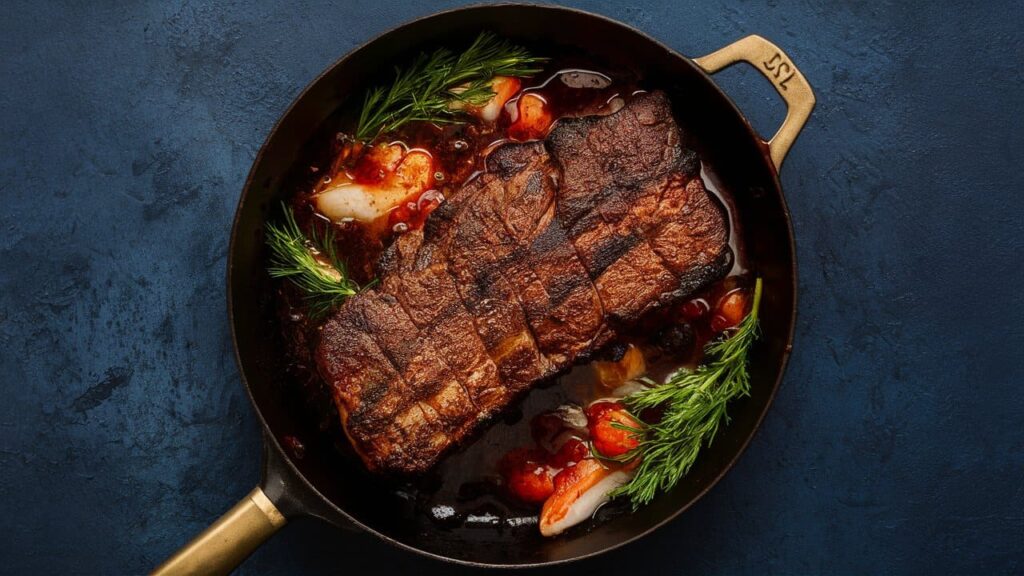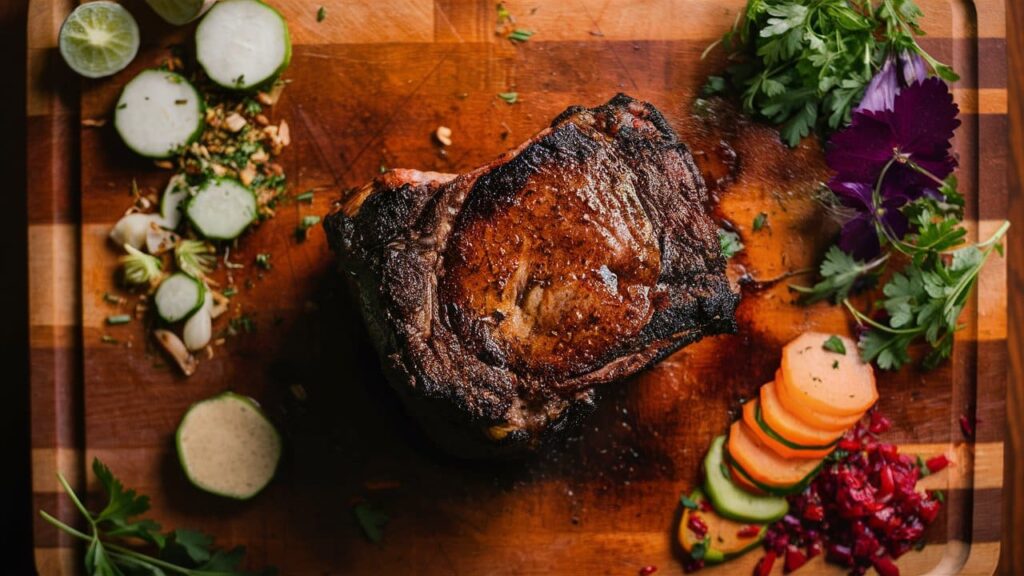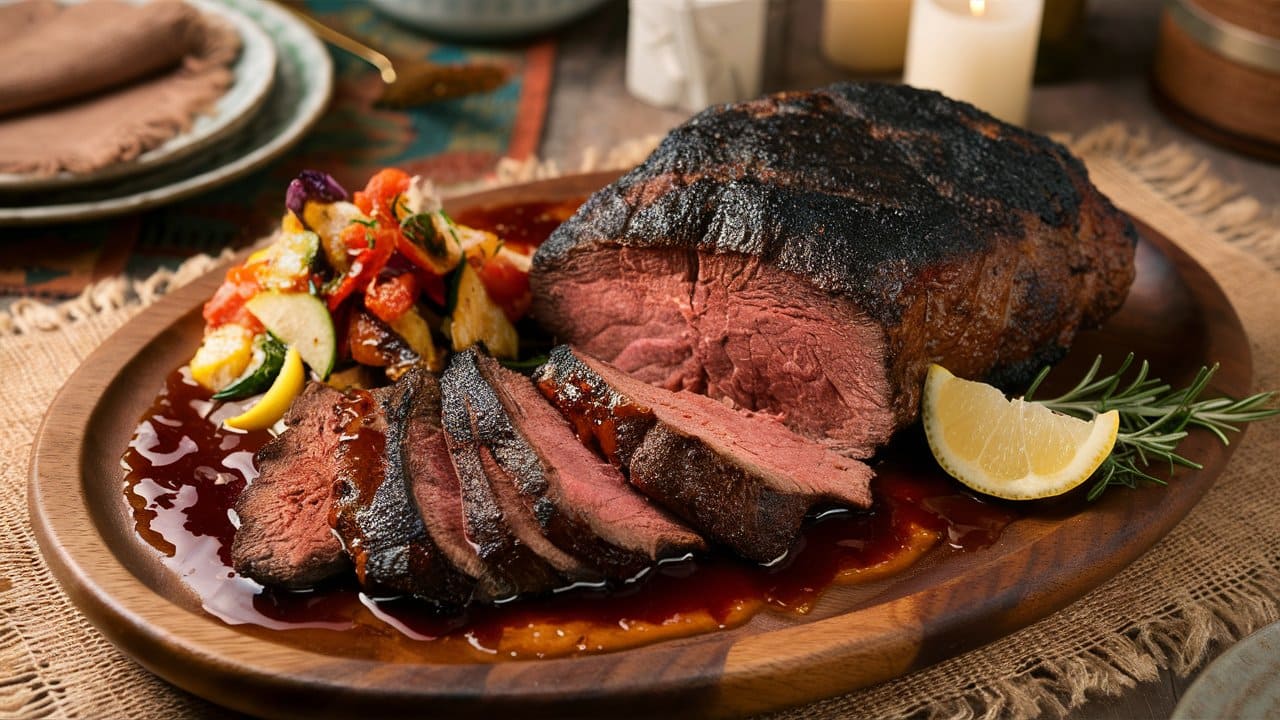Overcooking tri-tip, a flavorful and popular cut of beef known for its versatility and rich flavor, can be a disappointing culinary mishap. However, an overcooked tri-tip does not have to mean a wasted meal. With a few creative tricks and alternative uses, you can transform this less-than-perfect piece of meat into delicious, new dishes. In this comprehensive guide, we explore various ways to repurpose overcooked tri-tip, ensuring that your cooking efforts are never in vain.
Reviving Overcooked Tri-Tip: Techniques and Tips
Understanding the Texture
When tri-tip is overcooked, it often becomes tough and dry. This is due to the proteins in the meat contracting and squeezing out moisture. Understanding this change in texture is crucial as it influences how the meat can best be reused or transformed into other dishes.
Restoring Moisture
To mitigate dryness, it’s essential to reintroduce moisture. This can be achieved by slicing the meat thinly against the grain and using sauces or broths. For example, incorporating the sliced tri-tip into a stew or soup allows the meat to absorb liquid, making it juicier and more palatable.
Gentle Reheating
When reheating overcooked tri-tip, it’s important to use gentle methods that do not exacerbate its dryness. Slow cooking methods, such as using a slow cooker or a low-temperature oven, are preferable. Adding a moist environment by covering the meat with foil or a lid during reheating can also help.
Transforming Overcooked Tri-Tip into New Meals
Hearty Stews and Soups
A robust stew or soup is perfect for utilizing overcooked tri-tip. The long, slow simmering allows the tough meat to soften and the flavors to meld beautifully. Consider a classic beef barley soup or a rich vegetable beef stew. These dishes not only salvage the overcooked meat but can also become staple recipes in your culinary repertoire.
Innovative Sandwich Fillings
Overcooked tri-tip can be turned into a delicious sandwich filling. Shred the meat and simmer it in a flavorful BBQ sauce or a savory au jus to make sandwiches. Serve these on crusty rolls with toppings like coleslaw or caramelized onions for a treat that no one will guess started as a kitchen mishap.
Flavorful Tacos or Burritos
Mexican dishes like tacos and burritos are forgiving platforms for overcooked meats. Shred the tri-tip and season it with taco spices, then cook with a bit of tomato sauce or salsa to add moisture and flavor. Wrap the meat in soft tortillas with fresh vegetables, cheese, and sour cream for a meal that’s sure to please.
Enhancing Flavor: Sauces and Marinades
Choosing the Right Sauces
The right sauce can make a significant difference in rescuing overcooked tri-tip. Sauces that are bold and moist, such as teriyaki, chimichurri, or a homemade steak sauce, can complement the beef’s flavor and add much-needed moisture.
Homemade Marinades
If you plan to reuse the tri-tip for later meals, marinating the sliced or shredded beef can help reintroduce flavor and tenderness. Use ingredients like olive oil, vinegar, lemon juice, herbs, and spices to create a marinade that can revitalize the meat.
Quick and Easy Dips
Sometimes, simplicity is key. Creating simple dips such as horseradish cream or a blue cheese dressing can provide a moist and flavorful accompaniment to thinly sliced tri-tip, turning an overcooked piece of meat into an enjoyable appetizer or light meal.
Recipes for Repurposing Overcooked Tri-Tip
Transforming an overcooked tri-tip into a mouthwatering dish requires creativity and the right recipes. Here are specific ways to breathe new life into your tri-tip, turning what could be a culinary disappointment into a series of delightful meals.
Beef Stroganoff

Turning Tri-Tip into Stroganoff: Beef stroganoff is an excellent option for overcooked tri-tip. The creamy, savory sauce helps moisten and tenderize the beef, while the rich flavors mask any dryness.
Ingredients:
- Thinly sliced overcooked tri-tip
- Mushrooms
- Onions
- Garlic
- Beef broth
- Sour cream
- Dijon mustard
- Worcestershire sauce
- Butter
- Flour
- Egg noodles
Preparation:
- Sauté onions, garlic, and mushrooms in butter until soft.
- Sprinkle flour over the vegetables and stir to make a roux.
- Gradually add beef broth, stirring continuously, until the sauce thickens.
- Add the thinly sliced tri-tip, Worcestershire sauce, and Dijon mustard.
- Simmer gently to heat the meat through without further drying it.
- Remove from heat and stir in sour cream.
- Serve over cooked egg noodles for a comforting dish.
Asian-inspired Beef Salad
Refreshing Salad with Tri-Tip: Utilize thinly sliced overcooked tri-tip in an Asian-inspired salad for a light and flavorful meal. The acidity in the dressing will help tenderize the meat further and add a fresh zest.
Ingredients:
- Thinly sliced overcooked tri-tip
- Mixed salad greens
- Cucumber
- Carrots
- Red bell pepper
- Fresh herbs (mint, cilantro)
- Lime juice
- Fish sauce
- Sugar
- Chili flakes
Preparation:
- Combine lime juice, fish sauce, sugar, and chili flakes in a bowl to create the dressing.
- Toss the salad greens, cucumber, carrots, and red bell pepper in the dressing.
- Add the sliced tri-tip and fresh herbs to the salad.
- Toss everything together and serve immediately. This dish is perfect for a light lunch or as part of a larger dinner spread.
Slow Cooker Beef Chili
Rich and Hearty Chili: Overcooked tri-tip can be given new life in a slow cooker chili. The long, slow cooking process will help soften the meat, and the robust flavors of the chili are perfect for enhancing the beef.
Ingredients:
- Cubed overcooked tri-tip
- Onions
- Garlic
- Diced tomatoes
- Kidney beans
- Bell peppers
- Chili powder
- Cumin
- Beef broth
Preparation:
- Sauté onions and garlic until translucent.
- Add all ingredients to a slow cooker, including the cubed tri-tip.
- Cook on low for several hours until the chili is thick and the meat is tender.
- Serve with toppings such as cheese, sour cream, and green onions.
These recipes not only help make use of overcooked tri-tip but also transform it into meals that are enjoyable and satisfying. By incorporating these dishes into your meal planning, you ensure that no food goes to waste and every meal can be a feast, regardless of initial setbacks.
Preventing Overcooking Tri-Tip in Future Preparations
Ensuring that your tri-tip is cooked perfectly every time requires understanding the cooking process and knowing when to take the meat off the heat. Here are strategies and tips to prevent overcooking, preserving the natural juiciness and flavor of your tri-tip.
Understanding Meat Temperatures
Monitoring Internal Temperature: The key to preventing overcooking is closely monitoring the internal temperature of your tri-tip. Investing in a good meat thermometer can provide accuracy and ensure you remove the meat from heat at the ideal time.
Tips for Perfect Cooking:
- Rare: Remove at 120°F (49°C), will rise to 125°F (52°C) after resting.
- Medium Rare: Remove at 130°F (54°C), will rise to 135°F (57°C) after resting.
- Medium: Remove at 140°F (60°C), will rise to 145°F (63°C) after resting.
By understanding these temperatures, you can achieve your desired doneness without risking overcooking.
The Importance of Resting Meat
Allowing Meat to Rest: Resting your tri-tip after cooking is crucial. During this time, the juices redistribute throughout the meat, ensuring that it remains moist and tender when sliced.
How to Rest Properly:
- Remove tri-tip from heat and place it on a cutting board.
- Tent loosely with foil to keep warm.
- Let it rest for about 10 minutes before slicing.
This simple step is often overlooked but is vital in preventing a dry and tough tri-tip.
Cooking Methods and Techniques
Choosing the Right Cooking Method: Different cooking methods can affect how likely your tri-tip is to become overcooked. Slow cooking, reverse searing, and sous vide are methods that provide more control over cooking temperatures and can help prevent overcooking.
Effective Techniques:
- Slow Cooking: Low and slow allows for even cooking without the high heat that can toughen meat.
- Reverse Searing: Cook slowly in the oven, then sear on high heat for a crust.
- Sous Vide: Cook at a precise temperature in a water bath before finishing with a quick sear.
These methods not only enhance the flavor but also provide a safeguard against overcooking.

Nutritional Benefits of Including Beef in Your Diet
Tri-tip, when cooked properly, is not only delicious but also offers various nutritional benefits. It is a rich source of protein and provides essential vitamins and minerals, supporting a balanced diet.
High-Quality Protein
Building and Repairing Tissues: Beef is one of the best sources of high-quality protein, which is essential for building and repairing tissues in the body. Including tri-tip in your diet can help meet your daily protein needs effectively.
Rich in Essential Nutrients
Vitamins and Minerals in Beef: Tri-tip is rich in several key nutrients:
- Iron: Essential for blood production and efficient transportation of oxygen.
- Zinc: Supports the immune system and metabolic functions.
- B Vitamins: Particularly B12, which is vital for brain health and maintaining energy levels.
These nutrients make tri-tip an excellent choice for those looking to maintain a healthy and balanced diet.
Low-Carb and Keto-Friendly
Supporting Various Diet Plans: For individuals following low-carb or ketogenic diets, tri-tip is an excellent option. Its high protein and fat content fit well within these dietary restrictions, providing satiety and necessary nutrients without the carbs.
Conclusion
Overcooked tri-tip doesn’t have to signify a culinary failure. With creative culinary techniques and flavorful recipes, you can transform this mishap into a variety of delicious dishes. Additionally, understanding how to properly cook and handle tri-tip not only prevents future overcooking but also ensures that every meal is both nutritious and delightful. Whether you’re aiming for perfect medium-rare slices or exploring slow-cooked wonders, tri-tip offers a versatile and nutritious addition to your culinary repertoire. Embrace these techniques and recipes, and turn every tri-tip preparation into a successful, flavorsome feast.
You can get more recipes from here:

